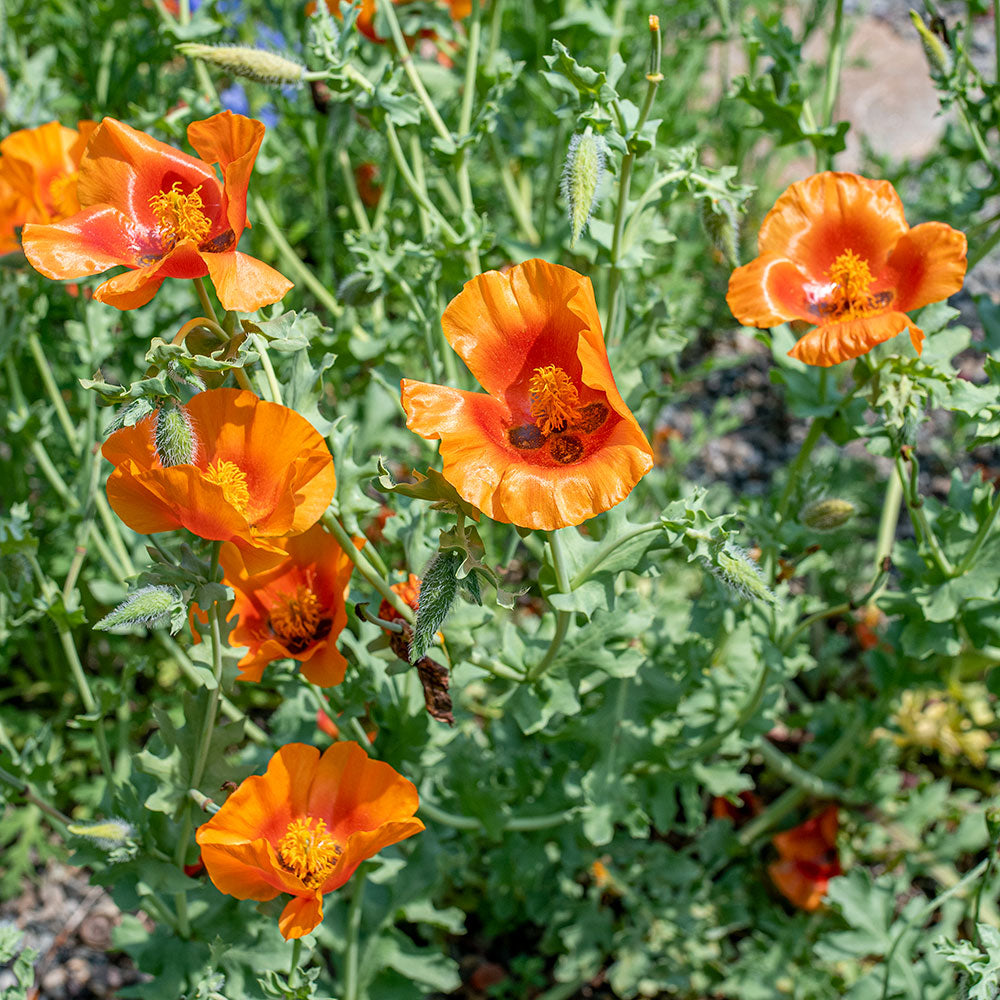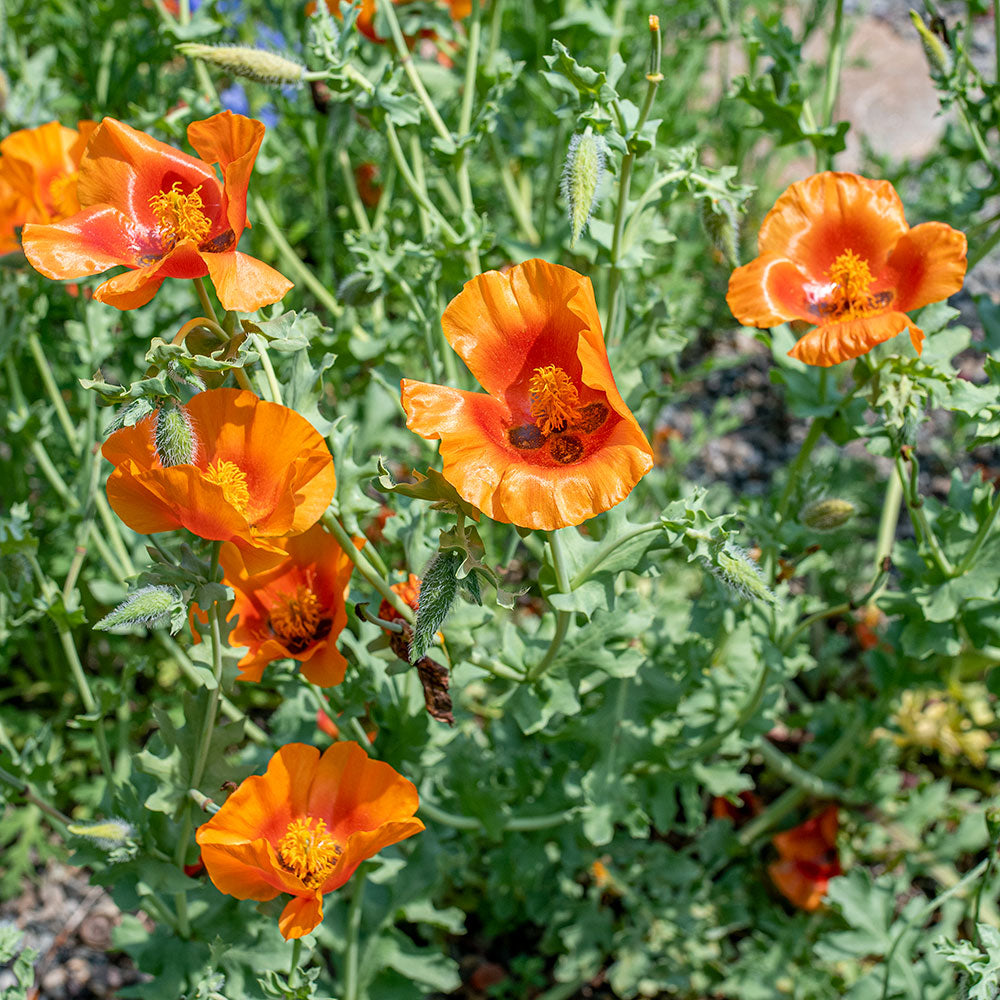SOWING INSTRUCTIONS
Sprout Time:
10-30 days after chill; can be erratic
Starting Indoors:
Stratify for 3 weeks at 35-40°F in late winter. To stratify, place seeds in dampened vermiculite or clean sand, enclose in a plastic bag and refrigerate. Eight to 10 weeks before last frost, remove pre-chilled seeds from refrigerator and sow. Cover with humidity dome and keep at 60-70°F. Transplant seedlings as they appear; anywhere from 2-8 weeks—be patient.
Starting Outdoors:
Direct sow in fall or earliest spring, or winter sow into pots in the shade, covered with a thin layer of clean sand and a wire screen to keep out mice and voles. Check for moisture at regular intervals.
PLACEMENT & CULTIVATION
Horned poppy has large, deeply cut, thickly felted leaves that add a dramatic form to rock gardens and gravelly dry borders, A biennial to short-lived perennial, site where drainage is perfect, particularly during the winter months. Deadhead to prolong bloom, and allow a few of the sizeable horned seed capsules to drop seed to help renew plantings.
Watering Details:
Water regularly while establishing, then only during especially dry, hot spells. Do not allow to remain wet, especially during winter months.
Fertilizer:
If soil is especially poor, mix in an inch or two of compost prior to planting.
Diseases & Pests:
Excess soil moisture can cause rot; ensure the area is well-drained.










































